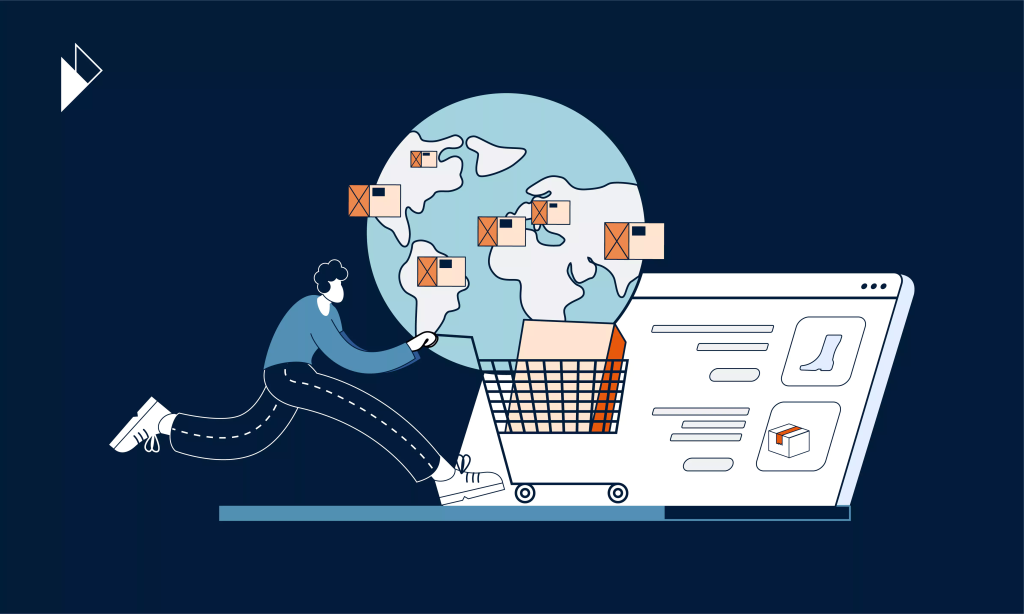
In the world of international e-commerce and global trade, cross-border returns have become an important aspect that businesses need to pay close attention to. While it brings certain difficulties, there are also many good opportunities that can be explored. And by using the right strategies, companies can handle cross-border returns more effectively. Let’s take a closer look at these aspects.
I. Opportunities
1. Venturing into New Markets
- Reaching More Customers: When a business has a good cross-border returns policy in place, it can attract customers from different countries. For example, if an online fashion store makes it easy for international customers to return items that don’t fit or meet their expectations. More people from various regions will be willing to shop there. This helps the business to grow and enter new markets that it might not have been able to reach before.
- Building a Global Brand: Handling returns well across borders gives a positive impression of the brand worldwide. Customers will see the company as reliable and customer-friendly. It is important for building a strong global brand image and increasing its popularity in different countries.
2. Upgraded Customer Support
- Meeting Expectations: Customers like to know that if they’re not happy with a product they bought from another country, they can return it without too much trouble. When a business makes the return process simple and smooth, it meets the customers’ expectations and makes them feel valued. For instance, offering prepaid return labels or clear return instructions can really boost customer satisfaction.
- Repeat Business: Satisfied customers are more likely to become loyal and come back to buy again. If they had a good experience with a cross-border return, they’ll trust the brand more and choose it for future purchases.
3. Increased Supply Chain Efficiency
- Data Insights: Handling cross-border returns provides valuable data about product quality, sizing issues, or customer preferences in different regions. This data can be used to optimize the supply chain. For example, if many returns from a certain country are due to a particular product defect. The company can work with suppliers to improve the quality or adjust inventory levels accordingly.
- Streamlining Processes: By dealing with returns regularly, businesses can find ways to make the whole process more efficient, from receiving returned items to restocking or disposing of them properly. This can save time and costs in the long run and make the supply chain work better.
4. Sustainability
- Reducing Waste: When returned items are managed well, they can be reused, refurbished, or recycled instead of being thrown away. For example, electronics that are returned can be repaired and sold again, reducing electronic waste and being more environmentally friendly.
- Eco-Friendly Packaging: In the return process, businesses can encourage the use of recyclable packaging materials. It can help with sustainability efforts and also shows customers that the company cares about the environment.
II. Challenges
1. Logistics
- Long Distances: Shipping items back across borders often involves long distances, which can lead to delays, damage to the products during transit, or higher shipping costs. For example, a small item being returned from Europe to Asia might take weeks to reach the destination and could get lost or damaged along the way.
- Multiple Handlings: The item usually has to go through different transportation modes and pass through various checkpoints, increasing the chances of something going wrong in the logistics process.
2. Regulations and Customs
- Different Rules: Each country has its own customs regulations and return policies. What’s allowed in one country might not be in another. For instance, some countries might have restrictions on certain types of products being returned, like food items or cosmetics, which can make the return process complicated for businesses and customers alike.
- Documentation Requirements: There’s a lot of paperwork involved in cross-border returns, from invoices to customs declarations. Making sure all the documents are correct and in order can be a headache for both the business and the customer.

3. Cost Concerns
- Shipping Costs: Returning items across borders can be expensive, especially if the business offers free or subsidized return shipping. These costs can eat into profits, especially if there are a lot of returns. For example, a heavy item being shipped back from overseas can cost a significant amount of money.
- Processing Costs: There are also costs associated with inspecting, restocking, or disposing of returned items. If a product needs to be repaired or refurbished before being resold, that adds to the overall cost as well.
4. Customer Prospects to Communicate
- High Expectations: Customers today expect a seamless and quick return process, similar to what they experience with local purchases. Meeting these expectations when dealing with cross-border returns can be tough, as there are many factors outside the business’s control, like shipping delays.
- Lack of Clear Communication: If the business doesn’t communicate clearly with the customer about the return process, including things like how long it will take, what steps to follow, or any additional fees, it can lead to dissatisfaction and even negative reviews.
III. Strategies for Meeting Challenges and Seizing Opportunities
1. Collaborating With Experienced Logistics Providers
- Local Expertise: Working with logistics providers that have a good understanding of the local market and customs regulations in different countries can make a big difference. They know the best ways to ship items, how to handle customs clearance quickly, and can avoid many common pitfalls. For example, a local logistics partner in a foreign country can navigate through local traffic and delivery challenges more efficiently.
- Network and Resources: These providers usually have an established network of warehouses and transportation options, which can help speed up the return process and ensure the safe handling of returned items.
2. Leveraging Technology and Automation
- Tracking Systems: Using advanced tracking technology allows both the business and the customer to know exactly where the returned item is at any given time. This transparency builds trust and helps manage customer expectations. For instance, customers can check online to see when their return package has cleared customs and is on its way back to the business.
- Automated Processes: Automating parts of the return process, like sending return instructions via email or updating inventory levels when an item is received back, can save time and reduce errors. It makes the whole operation more efficient and smooth.
3. Guaranteeing Transparent and Unambiguous Communication with Customers
- Detailed Instructions: Providing clear and easy-to-follow return instructions on the website or in the order confirmation email is essential. This should include things like how to package the item, where to send it, and what documents might be needed. For example, if a customer needs to attach a copy of the invoice for a return, it should be clearly stated.
- Regular Updates: Keeping the customer informed about the status of their return, like when the item has been received and when they can expect a refund or exchange, helps build a good relationship and keeps them satisfied.
4. Data-Guided Decision Making
- Analyzing Data: Regularly looking at data related to cross-border returns, such as the reasons for returns, the countries with the highest return rates, or the most common product issues, can help the business identify areas for improvement. For example, if a lot of returns are due to sizing problems with a particular clothing line, the company can consider adjusting the sizing chart or adding more detailed size descriptions.
- Making Changes: Based on the data analysis, making changes to the product offerings, return policies, or logistics processes can lead to a better overall cross-border returns experience for both the business and the customers.

Cross-border returns come with their fair share of challenges, but by recognizing the opportunities and implementing the right strategies, businesses can turn it into a positive aspect of their international operations. It’s all about finding a balance and constantly working to improve the process to keep customers happy and the business running smoothly in the global marketplace.




